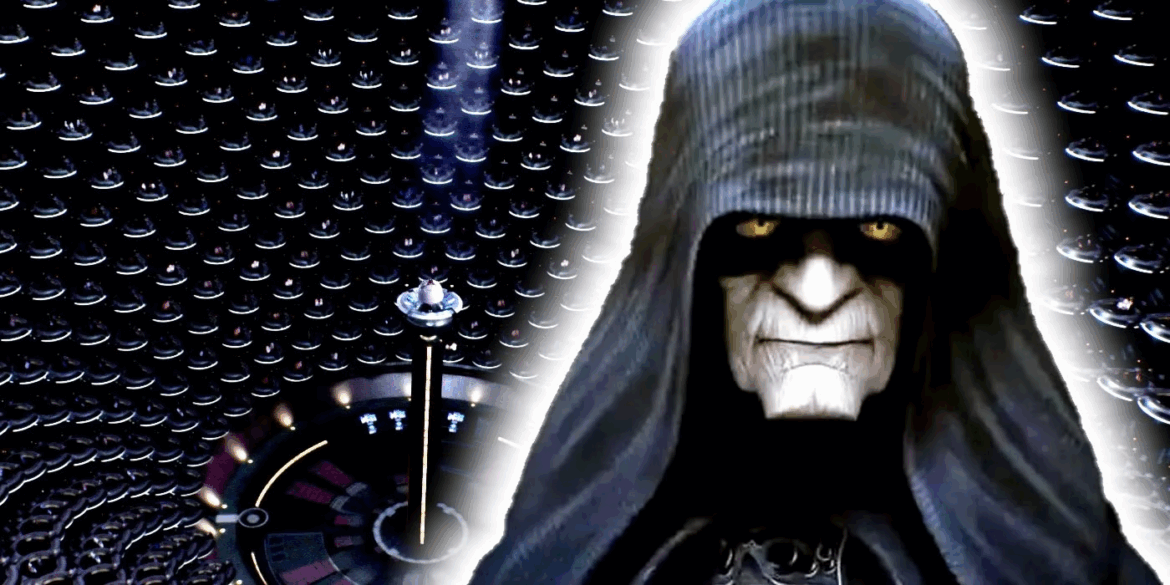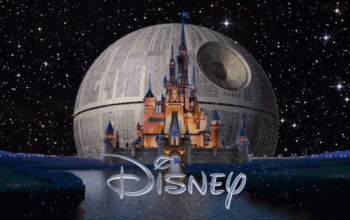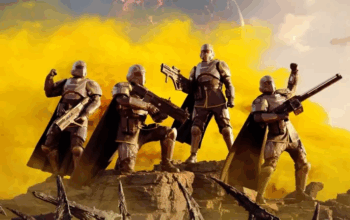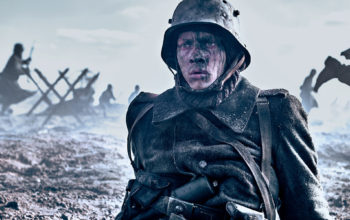There can be little doubt that Emperor Palpatine is one of the greatest villains in all of cinema. Everything from his hooded robes, his devious voice, to his ability to summon lightning, his debut in Return of the Jedi was one of the most memorable moments in the original trilogy.
The prequels expanded the character even further, showing us a different side of the character. Palpatine is a master of duality: on one hand, the hooded, sinister figure who pulls the strings from the shadows, often appearing only as a hologram. On the other hand, his public facade is that of the wise, caring, and seemingly benevolent politician who governs with charm and authority. The idea that one man can embody these two personas so convincingly is as terrifying as it is fascinating.
There’s no shortage of memorable scenes from the films that highlight these sides of him. However, the single moment that best encompasses Sheev Palpatine’s genius doesn’t come from the big screen at all—it comes from animation.
In The Bad Batch Season 2, a two-part arc delivers what I believe is Palpatine’s greatest scene.
Context: The Road to the Stormtrooper Program
The Bad Batch Season 2 takes place roughly two years after the events of Revenge of the Sith and Order 66 (though the show never gives an exact timeline). In this period, the Galactic Empire is consolidating power, and one of the major debates within the Imperial Senate is what to do with the clone army.
Vice Admiral Rampart, a rising figure within the Imperial military, champions a new piece of legislation: the Defense Recruitment Act. This bill would gradually phase out the clone troopers in favor of a new military force composed of enlisted citizens from across the galaxy, the Stormtroopers.

On the surface, there are practical reasons for this shift. The clone army was created as an emergency measure during the Clone Wars when the Senate voted to Remilitarize, but with the war over and the Republic transformed into the Empire, circumstances have changed. Cloning Soldiers is an Expensive and time-consuming process and after the destruction of Kamino, the process of new clones is imposible. Clones also age at twice the rate of normal humans, meaning they will rapidly reach the end of their fighting prime.
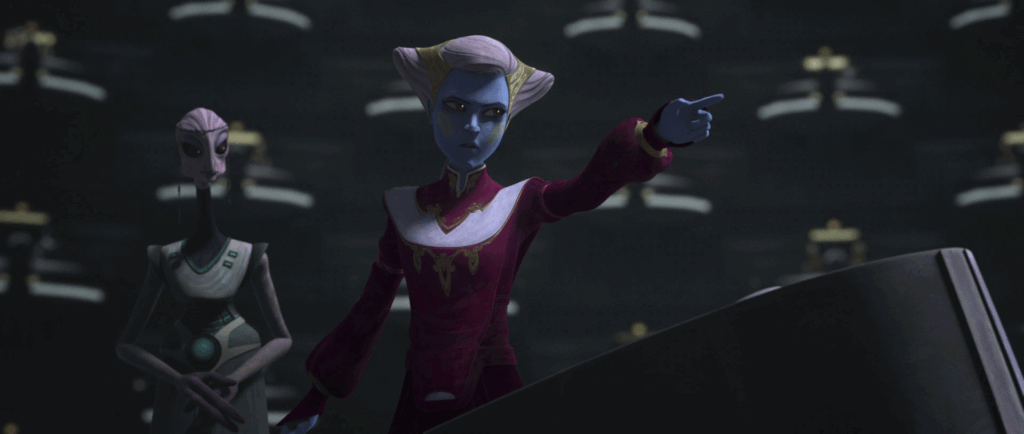
Yet the real debate isn’t just logistical—it’s moral. Should the clones be recognized as citizens of the Republic they fought and bled for, or are they property, weapons to be discarded? Senators like Riyo Chuchi fight to include provisions that would grant the clones pensions and basic rights, while Rampart pushes the military and political establishment toward replacing them outright with no such care.
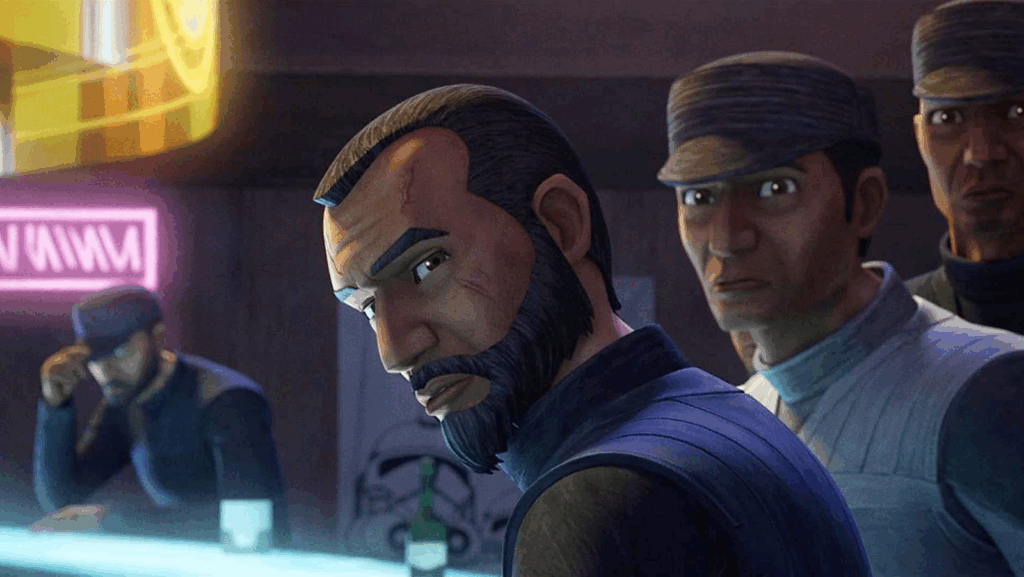
The climax comes when, thanks to the efforts of our protagonists, Clone Force 99, Rampart is exposed for corruption: embezzling funds and, most damningly, orchestrating the complete destruction of Kamino. He is arrested in the Senate chamber itself. But before the dust can settle, the chamber falls silent for a new arrival: Emperor Palpatine himself.
With Rampart exposed and the Senate in uproar, it seems like the Defense Recruitment Act might collapse alongside him. But then the chamber goes quiet, and the temperature shifts. For the first time in the series, the Emperor himself rises to speak.
Always Watching
What makes this scene immediately chilling is the way Palpatine emerges. In the films, we’re used to him striding into chambers or appearing via hologram, larger than life. But here, the reveal is far more subtle—and far more frightening.

Throughout The Bad Batch, it’s noted that the Emperor is often absent from Senate proceedings, a stark contrast to his days as Chancellor, where he was a constant presence. Early in the episode, Bail Organa even questions Palpatine’s lack of attendance, a quiet but pointed reminder that the Senate is no longer at the center of Imperial power.
So when Palpatine suddenly rises from his private pod during Rampart’s downfall, the realization hits like a thunderclap: he’s been here the whole time. Silent. Listening. Measuring every word of approval, every note of dissent.
It reframes his absence not as negligence, but as surveillance. He doesn’t need to speak, because his shadow alone dictates the conversation. And for senators like Bail, the revelation must be terrifying—knowing that every subtle jab, every small resistance, was made in earshot of the Emperor himself.
Political Hypocrisy at Its Best
The second reason this scene works so well is how it reveals that, even as a hooded recluse, he has lost none of the razor-sharp instincts that carried him to power.
With Rampart exposed, Palpatine seizes the moment to make his case against the clone army. Arguing that the clones cannot be trusted because they follow their rough commanders’ orders without question. It’s a chillingly effective point—except for the fact that this was by design. Palpatine engineered them to be obedient soldiers, stripping away individuality to ensure loyalty.
The irony is breathtaking. The very trait that made the clones so valuable during the Clone Wars is now rebranded as a fatal flaw, a justification for their disposal. In one move, Palpatine distances himself from their creation while presenting himself as the only one wise enough to see their danger.
And so the cycle begins again. The clones are discarded, and the galaxy is set on a new path: a military of indoctrinated citizens, trained and conditioned to obey the Empire just as blindly. Different soldiers, same chains—only now, the hypocrisy is buried under a mask of patriotism, a false sense of order and stability.
Ian Is Back
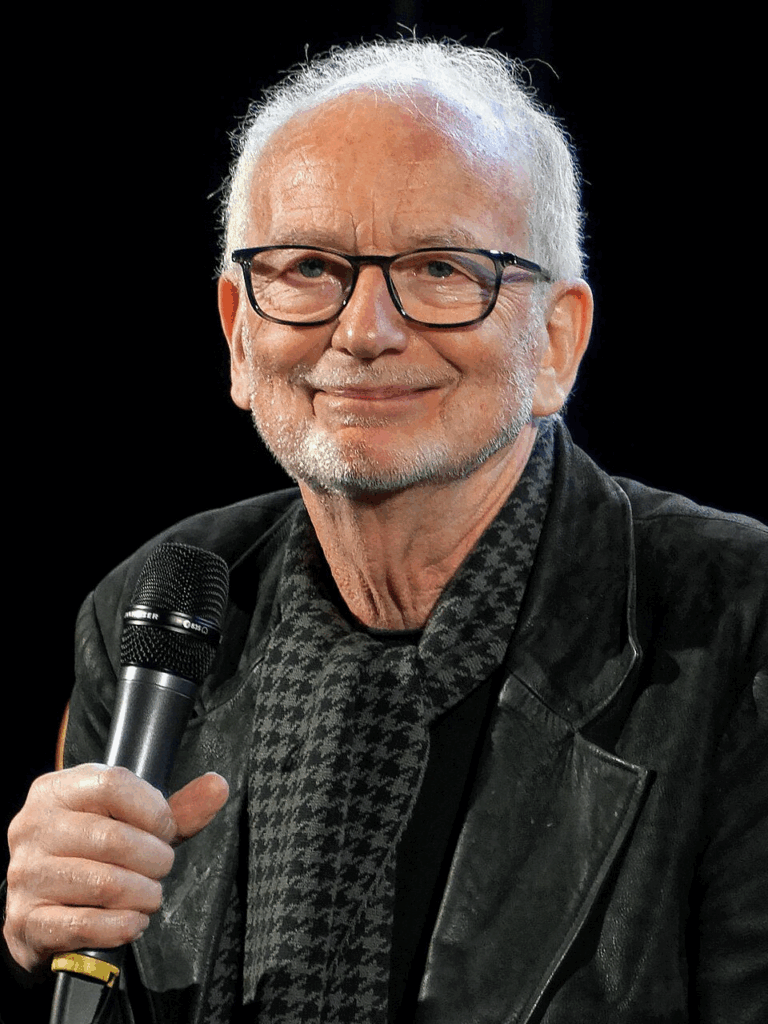
This scene wouldn’t have landed with the same impact if not for the return of Ian McDiarmid. Having the original actor voice Palpatine elevates the moment to an entirely different level because no one understands this character better than he does.
It would have been easy for Lucasfilm to use one of the many skilled imitators who have carried Palpatine in other projects. They can certainly deliver that iconic, sinister, crackling tone. But Ian approaches the character with a subtler hand. In this scene, his performance isn’t bombastic—it’s measured. You hear echoes of his proclamation in Revenge of the Sith, that carefully crafted, wounded voice appealing to the sympathy of the Senate, even as he bends them to his will.
That restraint is what makes the moment so chilling. Palpatine isn’t just a shadowy Sith Lord; he’s a politician who knows exactly how to play a crowd, how to sound reasonable, how to twist perception in his favor. Ian nails that balance effortlessly.
Had this scene been voiced by even the most talented stand-ins, like Sam Witwer, it likely wouldn’t have carried the same weight. McDiarmid brings not just the voice, but decades of experience embodying the character. When he speaks, we’re reminded that Palpatine’s true weapon has never been his sorcery; it’s persuasion.
Conclusion

While The Bad Batch may not be the most popular Star Wars show, it fulfills one crucial point in the lore: the transition from the Republic’s clone army to the Empire’s stormtroopers. It answers the lingering question of what became of the clone troopers after the war.
The series also foreshadows the haunting fate of these discarded soldiers. We glimpse it in Obi-Wan Kenobi, where a former 501st elite trooper is reduced to begging on the streets. It’s a sobering parallel to the real world, where many veterans often struggle to reintegrate into a society that was promised nonexistent benefits. For the clones, it’s even harsher, as they were never truly recognized as citizens, or even as people. They were just weapons to be disposed of at a whim.

Palpatine’s speech in this moment reflects the grim reality of how democracies slide into dictatorships, not in a single violent blow, but through the silent complicity of the Senate.
This is the best Palpatine scene because it fully encompasses who he is as a character. He doesn’t just cackle and throw lightning around; he makes cold, calculated choices that secure his power. This scene is not just a manipulation; it’s a dark reflection of the real world that many choose to ignore, but accept those willing to listen.
